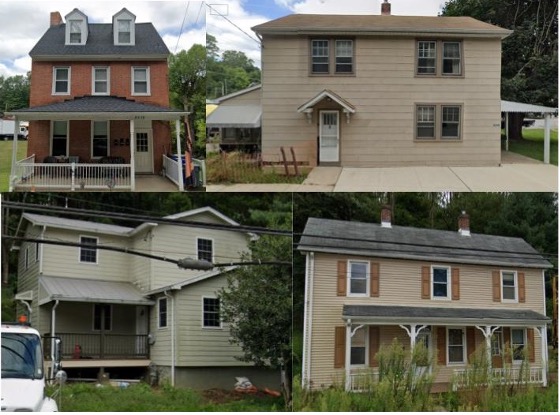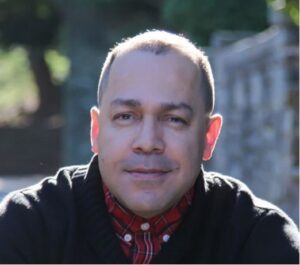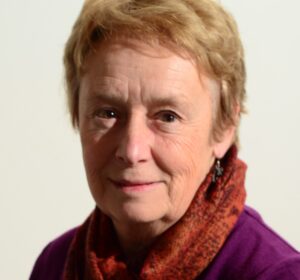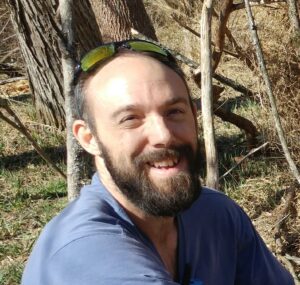Apply now to join our next cohort of Community Science Fellows and Community Leads!

Homes in the 8600 Main Street neighborhood of Historic Ellicott City, Maryland, many of which are immediately adjacent to the Hudson Branch tributary of the Patapsco River, are highly threatened by flooding and associated runoff pollution. These risks are exacerbated by the recent approach to flood management, which relies upon an 108” culvert, which is well past its lifespan, that intensifies the volume and flow rate of floodwater in the neighborhood. The county’s flood management strategies are currently being reevaluated but there is no indication that preservation of residents’ homes is a priority in this decision process. Community residents have identified many potential alternative approaches, including many nature-based strategies, to mitigate the flood risk using locally available resources. Our objective is to quantify the floodwater volume and velocity as well as water quality concerns associated with different flood management strategies and identify possible nature-based solutions that could be implemented on a local scale. This information would allow neighborhood residents to advocate, as well as seek funding and other support, for improved flood management approaches, which are deeply needed so that residents can remain in their homes and mitigate the risk of catastrophic flooding.
We are still open to the partnering with additional experts who may have something to contribute to our collaboration, so please get in touch if this describes you! In particular, we are seeking an expert who can contribute technical skills in stormwater modeling at a local scale. We are open to working remotely with scientists located anywhere in the USA or elsewhere.
The 8600 Main Street neighborhood is located in the West End Main Street community of Historic Ellicott City, Maryland, a historical mill town on the Patapsco River. The neighborhood borders the Hudson Branch tributary of the Patapsco, a short distance upstream from the downtown district. Though located in a wealthy county, the neighborhood faces the loss of generational wealth and heritage; it is threatened by gentrification and a growing risk of catastrophic flooding, and many heritage residences have been acquired by the county. There are around 60 homes in the West End of Main Street as well as other heritage communities along the periphery of Main St and local tributaries that are threatened by severe flash flooding.
The 8600 Main Street neighborhood is working with Thriving Earth Exchange to gather resources to enable efforts to protect and preserve the heritage community. They aim to move beyond a focus on rebuilding after flooding to a new framework of building long-term resilience. Residents are engaging with a wide range of resources to build resilience, and they hope that scientific data produced in partnership with Thriving Earth Exchange can galvanize and support their ongoing efforts to preserve their community.
For more information on the challenges facing Historic Ellicott City and their work to build resilience, you can view the following resources:
We aim to collect data to articulate multiple components of the flood risk threatening the 8600 Main Street neighborhood along the Hudson Branch:
The community hopes to make the results of this project available to relevant governing bodies and management agencies at the municipal, state, and/or federal level. Neighborhood residents also plan to use the results to inform their advocacy for effective flood risk solutions and in applications for funding and other external support to implement solutions. Flood risk mitigation strategies for the Hudson Branch are currently being reviewed as part of broader discussions of watershed management, so there is some urgency in obtaining data to inform residents’ participation in this decision process.
Project deliverables will likely include data reports and visualizations related to floodwater volume and velocity, water quality concerns, and the potential role of nature-based flood mitigation. These will be provided to community members and are intended to be used for communicating with municipal and state government entities in upcoming flood management decision processes.
A new flood management strategy is necessary for residents of the 8600 Main Street community to continue living in their neighborhood and avoid serious risk to their homes and lives. The data we plan to collect through this project are expected to significantly improve residents’ ability to participate in decisions about flood management in their neighborhood and to advocate for a new approach to flood management that mitigates the risk to their heritage community. They are eager to collaborate and share knowledge with the many communities across the country facing similar flood risks.
Residents and volunteer scientists collaborate across continents to build flood resilience
Ellicott City, Maryland, is part of the Baltimore metropolitan area, but this charming, historic mill town on the banks of the Patapsco River can feel like a step back in time.
Unfortunately, homes that are a treasured legacy of the city’s historic roots have been badly damaged by a string of severe floods in recent years. These neighborhoods are also experiencing a loss of generational wealth, accelerated redevelopment and clear-cutting. The vegetation loss is destabilizing river slopes and increasing erosion, making floods even more damaging.
With the odds stacked against them, residents are struggling to save their historic homes. Now, they are teaming with experts in a Thriving Earth Exchange project to get the data they need to build a more resilient community.
Empowering the community
Local residents created a community organization called Ellicott City Flood Solutions in 2011, after a catastrophic flash flood destroyed homes, vehicles, yards and more. The organization gained even more attention when equally destructive flooding occurred in 2016, and again in 2018.
“We formed to represent community interests in county stormwater management projects, and to help the county focus on flood solutions for our homes, not just on business interests,” explained co-founder Gayle Killen. “It’s important to the community that we persist.”
The organization’s first steps were to bring people together and inform fellow community members. The group’s founders went door-to-door to speak with neighbors, hosted community dinners and picnics, led post-flooding recovery efforts and launched a Facebook Group.
They also advocated for change with local authorities. Although it was at times an uphill battle that pitted residents against elected officials and business interests, group leaders spoke out for improved stormwater management practices at county board meetings and development hearings.
Seeking science
Community voices are crucial to starting a movement, but Ellicott City Flood Solutions members realized that their cause could benefit from some scientific expertise. They were passionate about saving their neighborhood, but they weren’t hydrologists, erosion control specialists or flood mappers. They needed scientists who could connect the dots and collect data that would convince local authorities that the problem was truly dire.
That’s when the group connected with Thriving Earth Exchange, kick-starting a new collaboration that has already involved multiple partnerships and spanned an ocean to help Ellicott City residents get the answers they need.
Through a contact at the Anthropocene Alliance, a Thriving Earth Exchange partner, community members were matched with Caitlin Mandeville, a Thriving Earth Community Science Fellow who is a doctoral candidate in biodiversity dynamics at the Norwegian University of Science and Technology. As project manager, Mandeville’s role is to coordinate project activities and help identify data needs and potential resources to address the community’s priorities.
Creating a coalition
The first step was to bring in hydrology, climate and green infrastructure experts who can accurately assess existing conditions, predict future flooding models and redesign stormwater plans. Marita Roos, a local landscape architect and planner, joined the project through the American Planning Association, a new Thriving Earth Exchange collaborator. Jose Manuel Molina Tabares, a hydrologist and water resources engineer with a particular focus on climate adaptation, lives in Ellicott City. A third expert contributor, Pearce Wroe, a water resources engineer and expert in stormwater management, was already working with Ellicott City residents to update their properties.
Mandeville says virtual collaboration tools and the dedication of local contributors have made it possible for her to coordinate the project despite living some 3,700 miles away in Norway. “Of course I would love it if I could see everything there with my own eyes,” she said. “But one of the strengths of the Community Science Fellowship program is how it enables everyone involved to draw on a broad network of expertise and experience from folks located all around the world.”
The coalition has already forged a strong bond. Scientific partners say they are in awe of the energy and advocacy they’ve seen from Ellicott City Flood Solutions members, and would be lost without that “insider” expertise. The feeling is mutual – Killen and her co-founders feel lucky to have the support of Thriving Earth scientists and partners. Even more good news is that the coalition has not just the backing, but the enthusiastic support, of Howard County’s District 1 County Council Team. Now, the challenge is to continue to build momentum, quantify future flood risk and work with local officials on long-term resilience solutions.
Future steps
Taking on a complex, systemic issue like stormwater flooding is a huge challenge, and the Ellicott City project is in its early stages. However, this talented team is off to an amazing start. While the scientists begin their initial work, community leads are finalizing a survey to provide a focus for the scientists’ attention and creating a walking tour of the Patapsco River’s Hudson branch to call attention to problem areas.
Building resiliency requires transparent, iterative risk mitigation measures that emphasize community priorities. With dedication and both scientific and community-based expertise, this remarkable coalition aims to create a future where Ellicott City’s historic homes – and their residents – are resilient in the face of catastrophic flooding.

Gayle Killen has supported community recovery from runoff rapids since 2011, after witnessing devastation in her historic community first hand. She has since flood proofed her home through wet-proofing and rainscaping and works to help the remainder of the community become resilient as well. While not specifically “anti-development”, she recognizes the role that redevelopment plays in historic communities such as her own and strives to preserve as much as possible. Gayle is a certified Wildlife Habitat Naturalist and a Natural Building enthusiast. She has used native rain scapes to collect and manage runoff, reinforced the walls of her 1809 historic Icehouse with Hempcrete, and has installed a TESLA SolarRoof with Powerwall batteries to preserve her historic home located in a Chronic Disaster Zone.

Jose M Molina is a hydrologist, climate researcher and water resources engineer specializing in environmental time series analysis and forecasting, climate change modeling, stochastic simulation of hydrologic systems, and sustainable water solutions for international development. Research interests include but not limited to statistical downscaling incorporating large-scale climate variability, Earth science data products for hydroclimate extreme events analysis and prediction, climate-based risk assessment of food and water systems and irrigation and drainage infrastructure. Jose also volunteers in fog projects that provide clean and safe drinking water to rural communities in developing countries. In his free time, he loves riding his mountain bike in Patapsco, Maryland.

Marita Roos is a registered landscape architect and planner who writes, designs, plans, builds and teaches with the aim of enlarging our participation in the urban/natural environment. Marita is principal designer and planner with UrbanBiology LLC, focusing on planning for green infrastructure, parks and green streets, integrated with local goals for climate resilience, art and placemaking. Her recent work with the Neighborhood Design Center includes the Windom Road Green Street & Barrier Art project with the town of North Brentwood, and the Story of Water and Art with Joe’s Movement Emporium. She is currently working with NDC on designs for David C Driskell Park in Hyattsville, MD, honoring the life and work of a notable local Black artist.
Marita has worked and collaborated with numerous organizations throughout her career including Vita Nuova Inc, DC Clean Rivers, the City of San Antonio, Andropogon Associates and HNTB engineering. For one of her favorite projects, the 2008 Central Delaware River Waterfront Visioning Plan, she facilitated engagement activities with dockworkers, residents, property owners and advocacy groups to regenerate seven miles of Philadelphia shoreline as a living, diverse, environment. Marita holds an MSc in biodiversity management from the University of London Imperial College at Wye and an MLA in landscape architecture from the University of Georgia.

Pearce Wroe is a professional water resources engineer who has been practicing stormwater engineering since graduating with a B.S. in civil engineering from the University of Maryland, College Park in 2006. In 2020 he founded the Stormwater Shoppe, LLC to apply his engineering experience in a way that makes people happy about stormwater management. He is also currently a Stormwater Management Project Manager for the City of Gaithersburg, MD where he reviews land development plans and manages stormwater capital improvement projects. Prior to founding the Stormwater Shoppe, Pearce spent over a decade designing stormwater facilities and drainage systems of all shapes and sizes. His passion for a beautiful natural world through stormwater management guides his practice and sometimes annoys his friends and family who don’t feel quite as strongly about it.

Caitlin Mandeville is an ecologist and PhD candidate at the Norwegian University of Science and Technology in Trondheim, Norway. Her research focuses on conservation applications of biodiversity citizen science, touching on the topic from several perspectives including open data access, intersections between citizen science and outdoor recreation, and the role of citizen science in protected areas. Before her current work, she earned a B.Sc. from the University of Wisconsin-Madison, explored ecosystems around the US through seasonal fieldwork and environmental education positions, earned a M.Sc. from the University of Wyoming researching the impact of temperature regulations on freshwater stream fish, and spent two years coordinating community science programming with New Hampshire Sea Grant. She is passionate about working directly with communities on conservation.
 Anthropocene Alliance Partner
Anthropocene Alliance PartnerAlexis Hidalgo is the Program Manager for Anthropocene Alliance, the nation’s largest coalition of frontline communities fighting for climate and environmental justice, of which the Historic Ellicott City Flood Solutions is a part of. She hopes to continue supporting in any way possible the incredible work that Gayle is doing to merge science and advocacy in her community.
(c) 2024 Thriving Earth Exchange